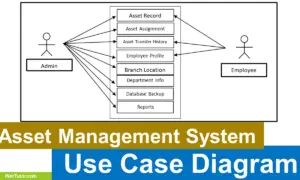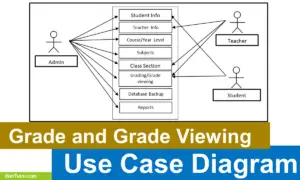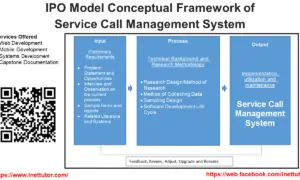Exam Management System Use Case Diagram
About the Project
Table of Contents
Exams are held to examine what students have learned about a particular subject and identify gaps and areas for development in the students’ knowledge. Exams are traditionally given face-to-face in a four-walled corner classroom. Teachers examine students in a classroom setting using printed test questionnaires and conduct the examination manually. The manual approach is considered inefficient and challenging for both teachers and students to use. The investigation was carried out by the researchers in order to build an IT-based solution to fill in the gap in the examination process. The researchers aimed to create a technology-assisted exam management process. The exam management system will efficiently streamline the exam management process. It will allow teachers and students to conduct examinations electronically.
What is an Exam Management System?
An exam management system is a software application or platform that is designed to help educators, administrators, and other stakeholders manage various aspects of the examination process. The system may include features such as:
- Test creation and management: This may include tools for creating, editing, and organizing tests, as well as features for managing test versions, questions, and answers.
- Scheduling and logistics: The system may include features for scheduling exams, assigning rooms and proctors, and managing seating arrangements.
- Test administration: The system may include tools for distributing tests to students, monitoring test-taking progress, and tracking time limits.
- Grading and feedback: The system may include features for grading tests, recording grades, and providing feedback to students.
- Reporting and analytics: The system may include tools for generating reports and analytics on exam performance, including student performance, class performance, and overall exam trends.
What is Use Case Diagram?
A use case diagram is a type of behavioral diagram in the Unified Modeling Language (UML) that shows the interactions between actors and use cases within a system. The purpose of a use case diagram is to capture the functional requirements of a system, including the interactions between the system and the external actors that use it. Use case diagrams are used to model the functional requirements of a system, and they can be used to help design and develop the system.
Use case diagrams consist of four main components: actors, use cases, associations, and relationships.
Actors: These are the external entities that interact with the system, such as a user, a customer, or another system.
Use cases: These are the actions or functions that the system performs in response to requests from actors. Each use case represents a single, distinct function of the system.
Associations: These are the lines that connect actors to use cases and show the interactions between them.
Relationships: These are the relationships between use cases, such as inheritance, generalization, and realization.
Use case diagrams are useful for capturing the high-level requirements of a system and can be used to help design and develop the system. They can also be used to communicate the requirements to stakeholders, such as customers, developers, and testers.
Use Case Diagram
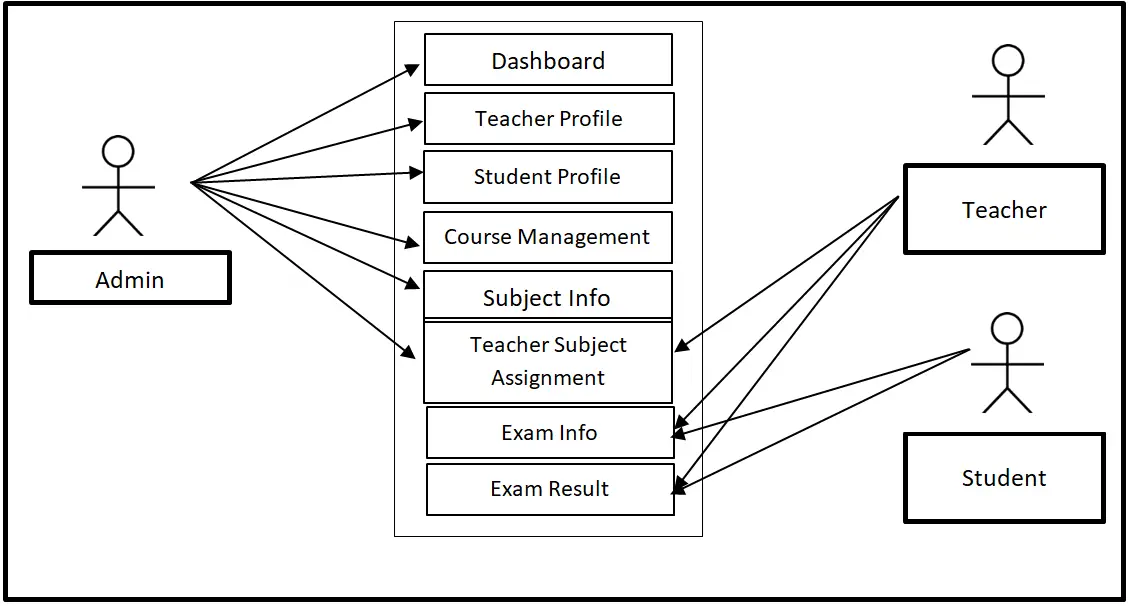
The teacher can access the Teacher Subject Assignment, Exam Info, and Exam Result modules. The student can access the Exam Info and Exam Result modules while the administrator can access the entire core modules of the system.
Use Cases
The following are the discussions that describe how a user uses a system to accomplish a particular goal.
Use Case: Dashboard
Actor(s): Admin
Description:
This feature is used to manage the information displayed in the system’s dashboard.
Successful Completion:
- Secretary can search, add, update and remove a data in the dashboard.
Alternative: The admin can access all the information displayed in the dashboard.
Precondition: The admin will login first to access the information in the dashboard.
Post Condition: updated dashboard information
Use Case: Teacher Profile
Actor(s): Admin
Description:
This feature is used to manage the personal profile of the teachers in the system.
Successful Completion:
- Admin can search, add, update and remove a teacher data or profile.
Alternative: Admin can access all of the teacher’s profile.
Precondition: New teacher for registration, existing teacher for updating
Post Condition: accepted teacher registration and updated teacher profile
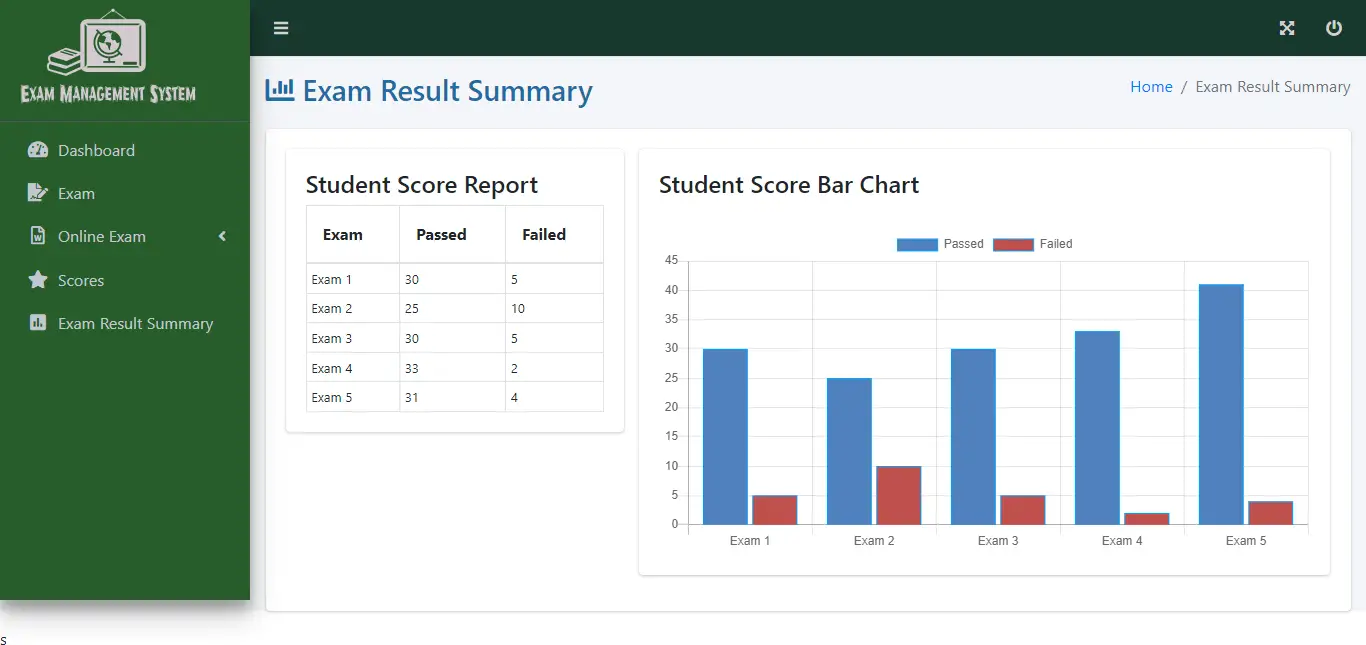
Use Case: Student Profile
Actor(s): Admin
Description:
This feature is used to manage the personal profile of the students in the system.
Successful Completion:
- Admin can search, add, update and remove a student’s data or profile.
Alternative: Admin can access all of the student’s profile.
Precondition: New students for registration, existing students for updating
Post Condition: accepted students registration and updated students profile
Use Case: Course Management
Actor(s): Admin
Description:
This feature is used to view and manage the course information.
Successful Completion:
- Admin can search, add, update and remove course
Alternative: None
Precondition:
- Admin will need to login first to access the course management module.
Post Condition: updated course information
Use Case: Subject Info
Actor(s): Admin
Description:
This feature is used to view and manage the subject information.
Successful Completion:
- Admin can search, add, update and remove subject
Alternative: None
Precondition:
- Admin will need to login first to access the subject information
Post Condition: updated subject information
Use Case: Teacher Subject Assignment
Actor(s): Admin and Teacher
Description:
This feature is used to view and manage the subject assignment for teachers.
Successful Completion:
- Teachers can view their subject assignments using this feature.
- Admin can search, add, update and remove subject assignment
Alternative: None
Precondition:
- Teachers will need to login first to access the module.
- Admin will need to login first to access the subject assignment
Post Condition: updated subject assignment for teachers.
Use Case: Exam Info
Actor(s): Teacher and Student
Description:
This feature is used to view and manage the exam information by teachers for students.
Successful Completion:
- Teachers can add exam information for students.
- Students can view and take the examination.
Alternative: None
Precondition:
- Teachers will need to login first to access the module.
- Students will need to login first to access the exam information module.
Post Condition: updated exam information for students.
Use Case: Exam Result
Actor(s): Teacher and Student
Description:
This feature is used to view and manage the examination result of students.
Successful Completion:
- Teachers can review the exams of the students and manage the result.
- Students can view their examination result.
Alternative: None
Precondition:
- Teachers will need to login first to access the module.
- Students will need to login first to access the exam result module.
Post Condition: updated exam result of students.
Summary
The exam management system will efficiently streamline the exam management process. It will allow teachers and students to conduct examinations electronically. The system has three different user sides, the admin, teachers and students. The teacher can access the Teacher Subject Assignment, Exam Info, and Exam Result modules. The student can access the Exam Info and Exam Result modules while the administrator can access the entire core modules of the system. The users will need to login first to access the system.
Readers are also interested in:
IPO Model Conceptual Framework of Exam Management System
Exam Management System Database Design
Exam Management System Free Bootstrap Source code
You may visit our Facebook page for more information, inquiries, and comments. Please subscribe also to our YouTube Channel to receive free capstone projects resources and computer programming tutorials.
Hire our team to do the project.
